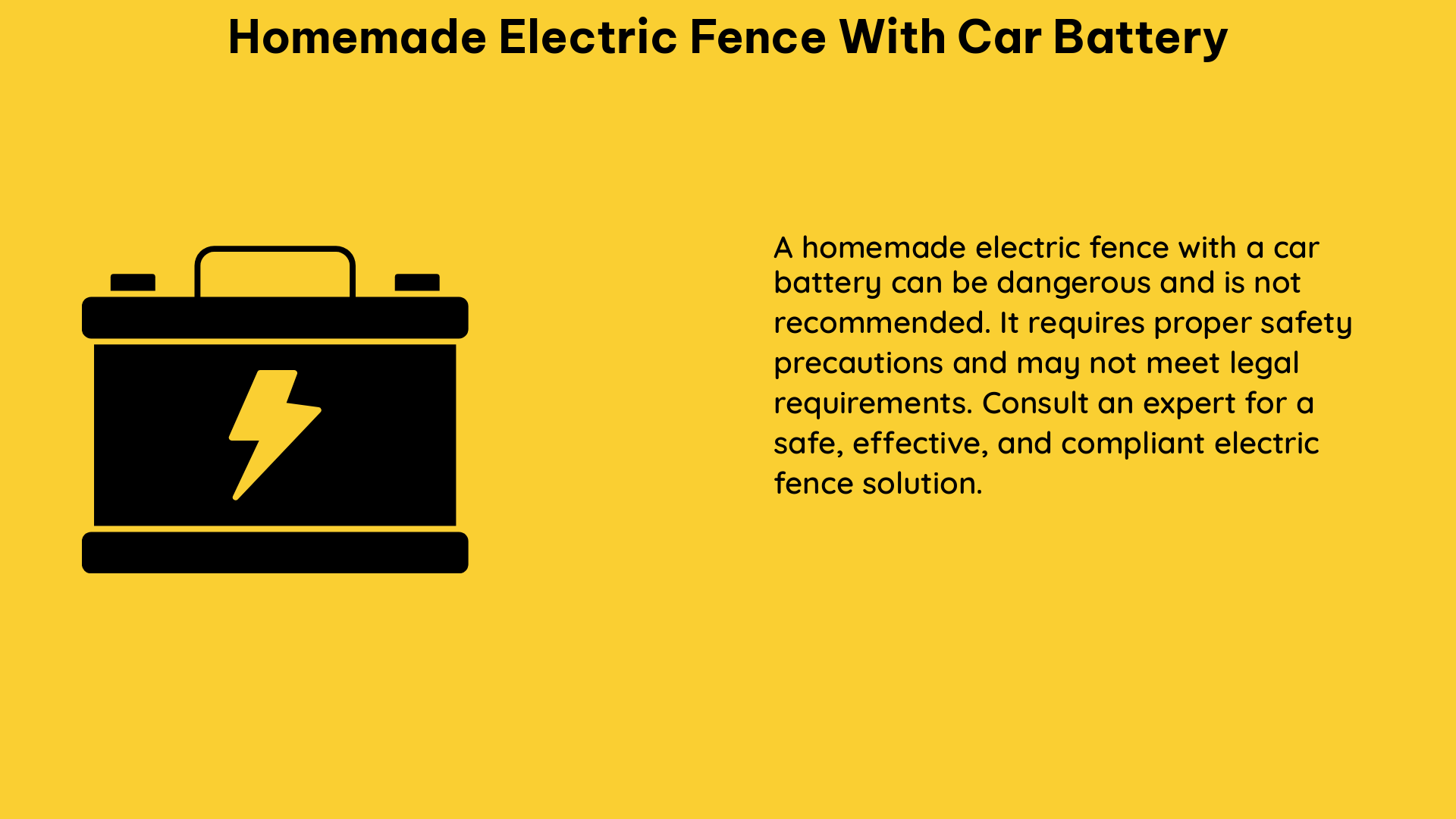Building a homemade electric fence with a car battery is a practical and cost-effective solution for securing your property, protecting your livestock, or deterring unwanted pests. This comprehensive guide will walk you through the critical components, technical specifications, and step-by-step instructions to help you create a reliable and safe electric fence system.
Battery Voltage and Fence Charger
The heart of your homemade electric fence system is the 12V car battery. However, to deliver an effective shock, the voltage delivered to the fence must be significantly higher than the battery’s voltage. This is achieved through the use of a fence charger, also known as a voltage amplifier or energizer.
The fence charger is responsible for converting the battery’s low voltage and high current into a high voltage (typically 5,000 to 10,000 volts) and low current output. This high voltage is essential for creating an uncomfortable, but not harmful, shock that deters intruders or animals from crossing the fence.
When selecting a fence charger, it’s crucial to choose one that is compatible with your 12V car battery and can deliver the desired voltage output. Look for chargers rated for at least 5,000 volts, as this will ensure an effective shock while maintaining a safe level of current.
Fence Wire Gauge and Length

The gauge and length of the fence wire play a crucial role in the fence’s effectiveness. Thinner wires, such as 14-gauge, have higher resistance, which can result in a voltage drop along the length of the fence. This voltage drop can reduce the shock’s intensity, making the fence less effective.
To mitigate this issue, it’s recommended to use thicker, 12-gauge copper or aluminum wire. These wires have lower resistance, ensuring a more consistent voltage along the entire fence line. The length of the fence wire will depend on the size of the area you need to secure, but it’s essential to maintain a continuous, unbroken circuit.
Grounding System
Proper grounding is a critical component of any electric fence system. The grounding system ensures that the shock is delivered effectively to any intruder or animal that comes into contact with the fence. Without a proper grounding system, the fence may not function as intended, and the shock may not be felt by the target.
To create an effective grounding system, you’ll need to install a minimum of three ground rods, spaced at least 10 feet apart and driven at least 6 feet into the ground. These ground rods should be connected to the negative terminal of the car battery using a heavy-duty wire.
Safety Considerations
Safety is of the utmost importance when building a homemade electric fence. It’s essential to ensure that the fence is not accessible to humans or pets, except for the intended animals. This can be achieved by installing the fence in a secure location, such as a remote area or behind a physical barrier.
Additionally, you should install proper signage warning of the presence of an electric fence. This signage should be clearly visible and placed at regular intervals along the fence line to prevent accidental contact.
DIY Steps
- Choose a suitable location for the fence: Consider the size of the area to be fenced and the type of animals or intruders you need to contain or deter.
- Install the ground rods: Space the ground rods at least 10 feet apart and drive them at least 6 feet into the ground.
- Connect the ground rods to the battery: Use a heavy-duty wire to connect the ground rods to the negative terminal of the 12V car battery.
- Connect the fence charger: Attach the fence charger to the positive terminal of the car battery, ensuring that it’s rated for the desired voltage and current output (minimum 5,000 volts).
- Run the fence wire: Attach the fence wire (12-gauge copper or aluminum) along the perimeter of the fenced area, using insulated posts or hooks to support the wire.
- Connect the fence wire to the charger: Securely connect the fence wire to the positive output of the fence charger, making sure the connection is properly insulated to prevent shorts.
- Test the fence: Use a voltage tester to ensure that the fence is delivering the desired voltage along the entire length.
- Install safety signage: Place clear and visible warning signs at regular intervals along the fence line to alert people of the electric fence.
By following these steps and adhering to the technical specifications, you can create a reliable and effective homemade electric fence using a car battery. Remember to prioritize safety and regularly maintain your fence system to ensure its continued performance.
References
- How to Make an Electric Fence | All About Circuits
- Using a car battery to power a (very small) electric fence? | Chronicle of the Horse Forums
- How to create an electric fence for slugs and snails using a car battery | Electronics Stack Exchange

The lambdageeks.com Core SME Team is a group of experienced subject matter experts from diverse scientific and technical fields including Physics, Chemistry, Technology,Electronics & Electrical Engineering, Automotive, Mechanical Engineering. Our team collaborates to create high-quality, well-researched articles on a wide range of science and technology topics for the lambdageeks.com website.
All Our Senior SME are having more than 7 Years of experience in the respective fields . They are either Working Industry Professionals or assocaited With different Universities. Refer Our Authors Page to get to know About our Core SMEs.